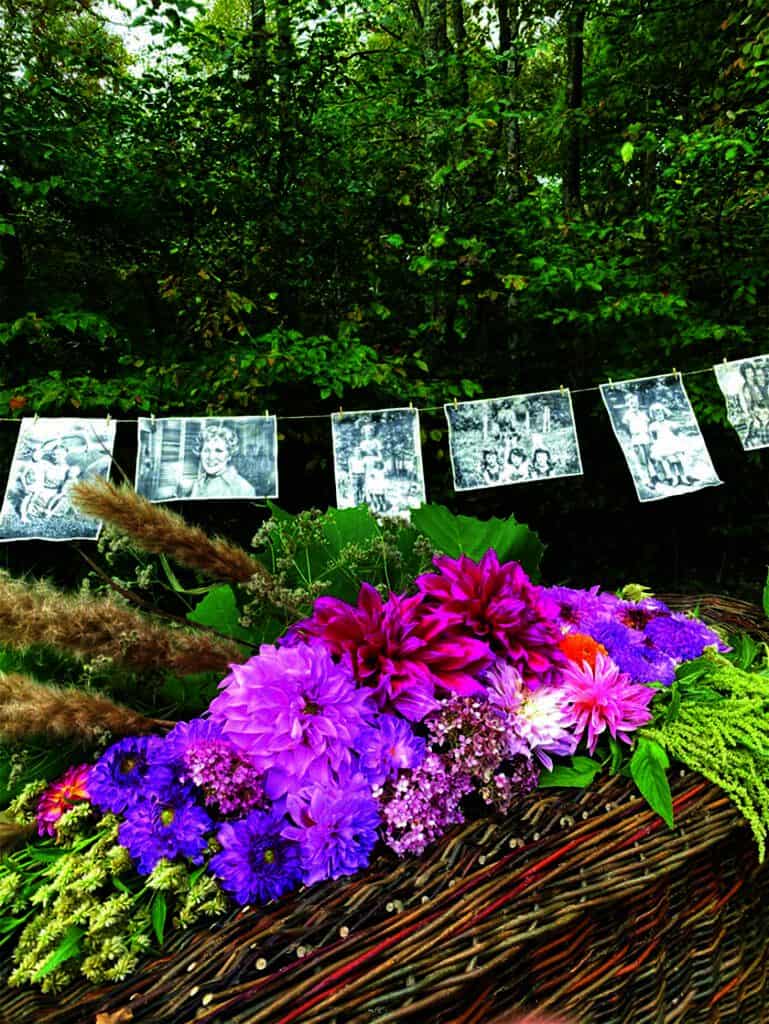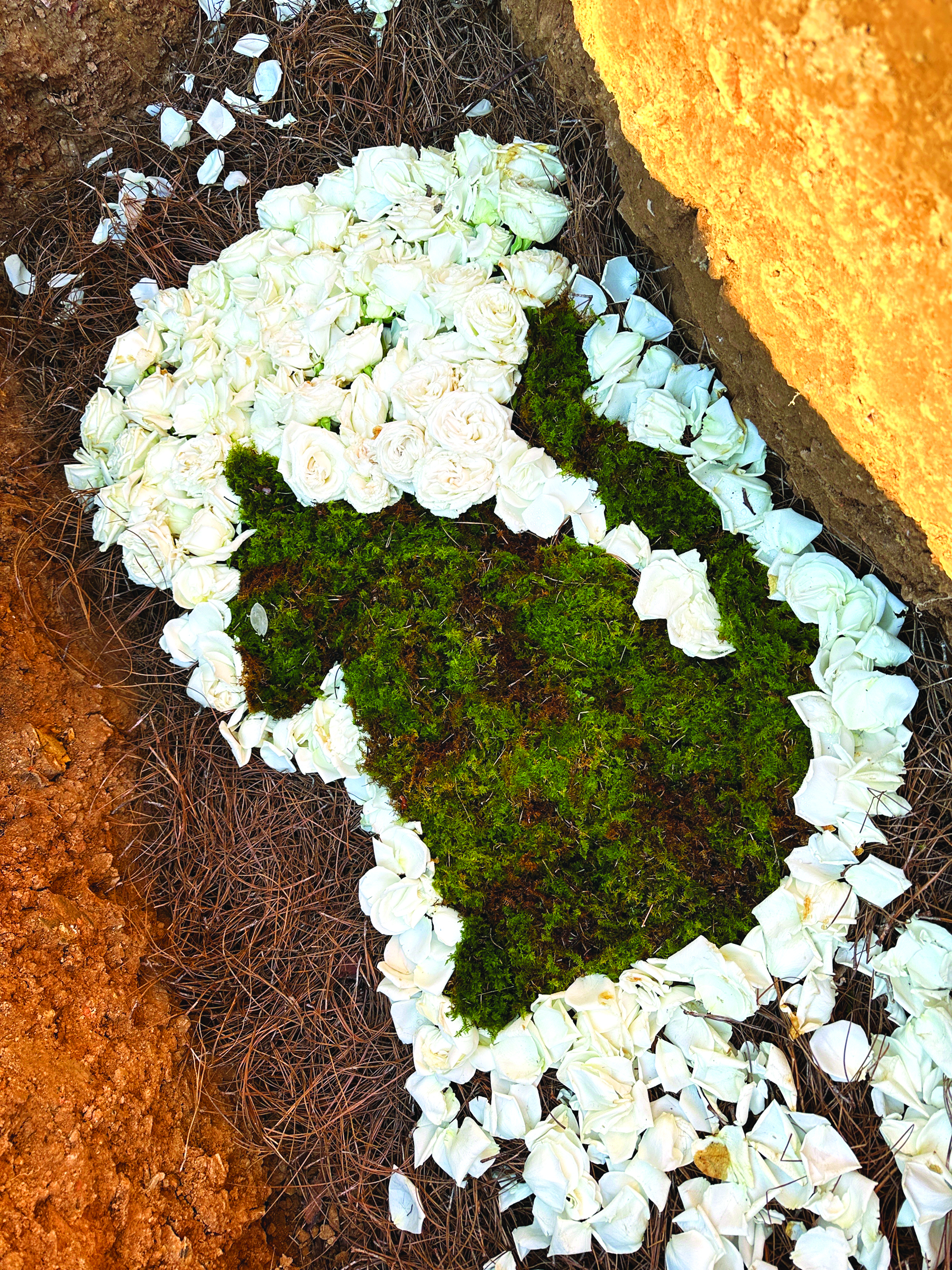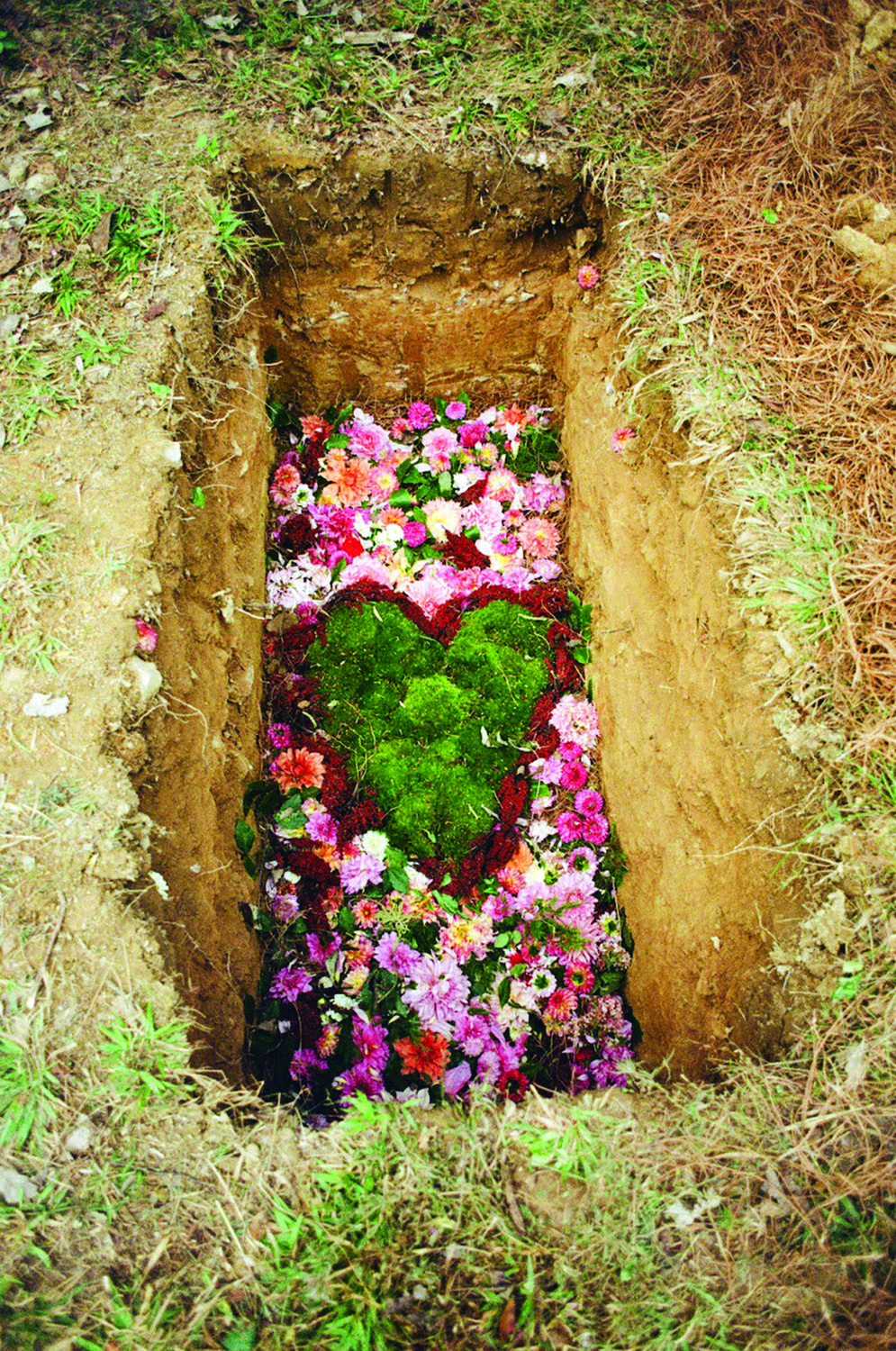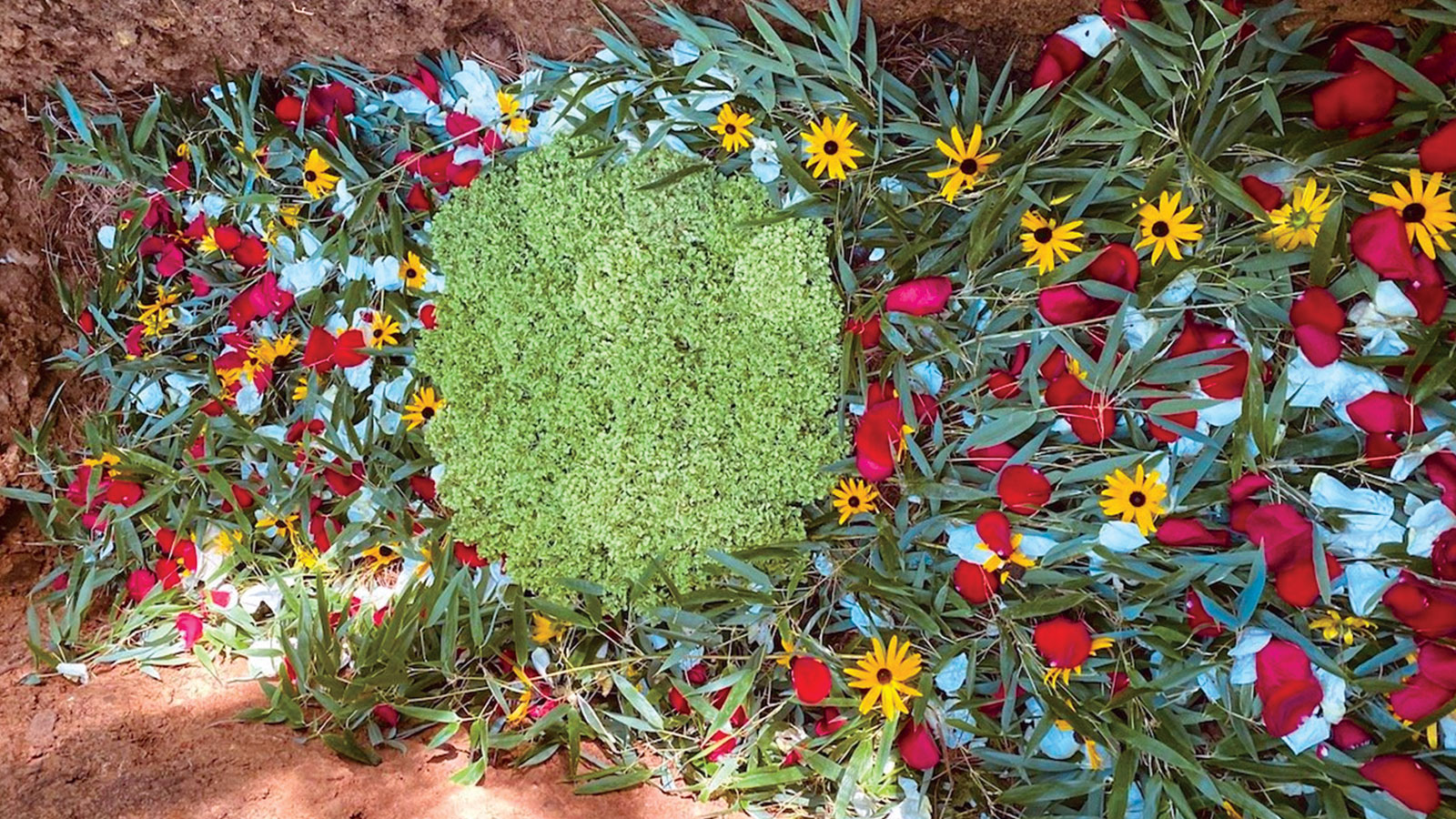Living Your Legacy Interview with John Christian Phifer the Executive Director of Larkspur, a Conservation Burial Ground and Protected Green Space
Published on November 23, 2022

John Christian Phifer grew up on a farm in West Tennessee with Mother Nature “as a babysitter.” This early and deep connection to the natural world inspired him to move beyond his role as an embalmer and funeral director to found an organization dedicated to green burial and land conservation, right here in Middle Tennessee. He spoke with Alive President and CEO Kimberly Goessele about how he is living his legacy and shared how Alive played a role.
How did you go from being a funeral director to changing the conversation about caring for the dead and their families? I’ve seen the beautiful natural arrangements you use in burials, and it reminds me of the song If I Die Young (by The Band Perry), “If I die young, bury me in satin. Lay me down on a bed of roses.”
Growing up on a farm, I was so dialed-in to the cycles of life and Mother Nature. I remember finding a dead grasshopper and wanting to honor its existence. I wrapped it in leaves and buried it in the ground.
I don’t know why that was my calling as a child, but it carried through my youth. I’ve aways been one who loved nature and wanted to help.
 I started working at the local funeral home in Camden, TN and then throughout the state where the company I worked for ran homes. I experienced small scale, hometown funeral homes and large metro funeral homes. I learned a lot, including understanding hospice and how it can be a catalyst for the conversations we need to have about end-of-life wishes.
I started working at the local funeral home in Camden, TN and then throughout the state where the company I worked for ran homes. I experienced small scale, hometown funeral homes and large metro funeral homes. I learned a lot, including understanding hospice and how it can be a catalyst for the conversations we need to have about end-of-life wishes.
I always wanted to do better and more and break out of the mold. At a certain point, to do that, I had to take a leap of faith and step away from the conventional funeral home model.
So many choose cremation (57% nationally), and then you have people, especially in the South that want to have a traditional funeral with embalming, and maybe an open casket with a receiving line. Then there is the other side of the spectrum where someone drives to the burial, gets out of their car for about 15 minutes and then goes to have lunch.
It’s good to provide families whatever they want, especially when it’s as important as burying the dead.
But I wondered, where is the middle road? I felt people needed more options.
Part of my legacy is educating the public on conservation of land, mitigating climate change and returning to historical burial practices. I also teach friends in the industry what we weren’t taught in school. We can be better stewards of life and the end of life. I get chills when I think about how far we have come. We have an opportunity to do life better and the end of life better.
There is a perception that if you don’t do the traditional thing, you are not showing respect.
You’re changing the conversation to let people design their burial the way they want to.
Part of what I educate people about is how to honor wishes and also build in what you need from the experience. My grandmother wanted to be buried the same way as my grandfather, which I think was also a way of avoiding the conversation about her wishes. We honored her wishes but built in some things we needed too.
She wanted a pecan wood casket, which we gave her. I lined the bottom of her grave with flowers, and we didn’t use a vault because it’s not as environmentally friendly.
When families are trying to honor a loved one’s wishes I remind them their loved one would have also said they don’t want you to hurt or be uncomfortable or go into debt. I think pragmatically…how can we honor mom and support you and your family and your children.
Larkspur is quite accessible, and as a nonprofit we can support families when they don’t have the full means. We don’t ever want to turn anyone away based on cost. We want this to be an option for everyone not just a few.
We share that with you as a nonprofit. It is devastating when a patient has had an illness for a long time, and they are financially depleted. We don’t turn anyone away.
What was the turning point for you when you decided to leave the traditional funeral industry and bring burials and nature back together?
Working day in and day out at a funeral home and as an embalmer, I began to see that the company I worked for hoped I would stay in that capacity for many years. They wanted me to feel like I owned it, so I would be invested in staying. They put up an oil painting of me on the wall. It was actually computer-generated, not real oil. I thought, “Will I spend the rest of my life in a suit, walking this facility with wing back chairs?”
I didn’t want that for my story at the end of my life…to only help people this one way, but my hands were tied there. I knew I had to make a break and make a significant change on my own.
Becca Stevens reached out to me around that time. As a priest she had cared for families and helped decipher what to do at the end of life many times. She had similar thoughts, like how do you create green space and make a place like Warner Parks where you could be buried? How does it look, and how does it work? A parishioner of Becca’s was a friend of mine and a social worker at Alive, Tisha Longo. We had handled several pediatric deaths and funerals together. While working with Tisha to arrange funeral plans for Alive pediatric families, I saw a need and created a program to provide free funerals/burials to parents who had lost a child. Becca preached one day on the end of life, and Tisha told Becca to reach out to me. That’s part of how Larkspur got started.
 You are also an end of life doula. How is that incorporated in your work?
You are also an end of life doula. How is that incorporated in your work?
I didn’t realize how much empathy I would develop in this training and how it would change my course of what I want my legacy to be. An end of life doula is someone that acts as a bridge of support, not with medical or spiritual care, but by being present to help carry out the wishes of the patient and make sure they are known. We can sit with the dying when family can’t. I encourage everyone to look into it. I started studying when I left the traditional funeral world and wanted to absorb all the different modalities, so I could better serve the Larkspur community.
In the training, there were several people who were never going to use it outside their family, but mom was getting older, and they wanted to be the best support possible. As doulas, we help create a road map, heal and tidy up relationships, make a final trip to the beach. It’s not spiritual or medical; we pick up the slack in between. I use my training all the time in conversation with patients and those who have lost loved ones.
We have some conversation cards to help people have discussions about legacy. One of the questions is, “What would you like to see more of in the world?” How do you answer that?
More community engagement and support between the people doing the work in the death care world, senior services, funeral directors, etc. We are all doing vital work, but we get busy and don’t have time to connect and support each other. We can feel like we are on islands in our hustle. The dying can feel like they are on their own island. It’s a better experience for the dying if we can all come together as professionals and provide better support to each other.
About Larkspur
Larkspur is a Conservation Burial Ground. A protected Green space dedicated to natural burial.
With each burial the land is restored, contributing green space for the community to explore, clean air, and clean water. It is the ultimate legacy to leave for future generations. https://larkspurconservation.org/
John Christian Phifer, Executive Director, Larkspur Conservation
Licensed as a funeral director and embalmer, certified end-of-life doula, funeral celebrant, and a home funeral guide, John Christian currently serves as the Executive Director of Larkspur Conservation. He has led Larkspur’s creation of Tennessee’s first conservation burial ground, a nature preserve for natural burial. John Christian is a member of the Tennessee Funeral Directors Association, the National Home Funeral Alliance and a founding member of Conservation Burial Alliance. His work has recently been featured in a documentary film called Bury Me At Taylor Hollow which is currently available on PBS. Today, he holds a deep respect for mother nature and works to educate and empower the public by bridging environmental advocacy and end-of-life care.

